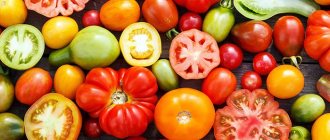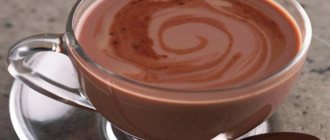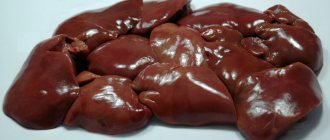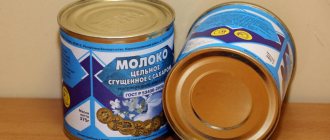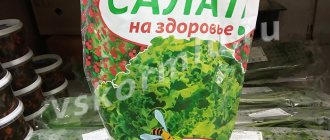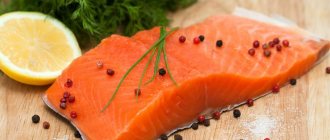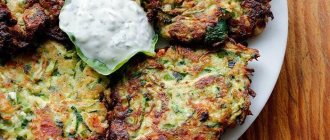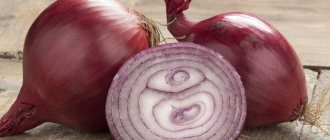The limited nutrition of a new mother often becomes one of the causes of depression. It is especially difficult for women to live without sweets during breastfeeding. It is not surprising that they have a question about whether marmalade can be consumed while breastfeeding in the first month. Today we will talk about the features of using such a product during breastfeeding and learn how to prepare marmalade at home.
Marmalade will benefit the mother while breastfeeding, especially if it is prepared at home.
The benefits of sweets during lactation
To the most frequently asked question, whether a nursing mother can have sweet foods, doctors answer positively. They claim that thanks to the increased production of serotonin, carbohydrates contained in sweet products are not only additional calories, but also a boost of energy. At the same time, they warn: with moderate consumption.
A reasonable amount of sweets will bring many benefits to a nursing mother:
- increase the production of happiness hormones - serotonin and endorphin, which increase vital activity, reduce fatigue, irritability, relieve pain;
- have a beneficial effect on brain function, improve mood, successfully cope with stress, and normalize sleep;
- contribute to faster recovery of the body after childbirth, helping to cope with depression.
The benefits of marmalade during breastfeeding
Real marmalade consists exclusively of natural ingredients. It is useful for nursing women. Organic sweets will not harm the baby. It consists of agar-agar, pectin, and organic acids. Marmalade contains many vitamins and minerals. This provides the following product properties:
- improves the functioning of the gastrointestinal tract;
- normalizes metabolism;
- increases the level of hemoglobin in the blood, which helps with anemia;
- replenishes the supply of vitamins and minerals in the body;
- improves mood;
- helps against stress and depression;
- normalizes the functioning of the nervous system;
- improves brain function;
- helps with insomnia;
- improves thyroid function;
- helps quick recovery after childbirth;
- normalizes liver function;
- removes toxins;
- improves skin condition, promotes wound healing, etc.
Harm

However, young mothers should be selective in their choice of treats, as they can harm them and the newborn. Breastfeeding experts warn against overindulging in sugary foods because:
- an excess amount of carbohydrates in breast milk is detrimental to the baby;
- substances and additives contained in confectionery products can provoke an allergic reaction;
- cause increased gas formation and colic;
- when teeth appear, they contribute to caries;
- promote weight gain;
- provoke the development of diabetes mellitus;
- the presence of preservatives, dyes, and other harmful chemical elements can lead to intoxication of the body.
However, this does not mean that it is better to abstain from sweets during lactation. The main thing is to carefully choose products, giving preference to natural ingredients.
Moderate consumption of confectionery products allows you to combine business with pleasure: maintain lactation, improve the quality of milk, improve mood, and replenish lack of energy.
Safe foods during lactation include oatmeal cookies, biscuits, dried fruits, many Eastern sweets (kozinaki, halva, Turkish delight), dark chocolate, unleavened flour products, baked fruits, marshmallows. The most useful are marshmallows and marmalade, which we will discuss later.
Possible harm and contraindications
Since marmalade is very sweet, frequent use can cause the development of caries and other problems with tooth enamel. In addition, sweetness can cause excess weight gain in a nursing mother. Often after giving birth, women try to cope with the hated kilograms gained during pregnancy.
Agar-agar treats contain a lot of iodine, so if consumed in excess, an excess of this substance may occur. Marmalade should not be eaten if you have diabetes, as the product causes a sharp jump in blood sugar, which is dangerous if you have the disease. Store-bought marmalade contains flavorings, preservatives and other chemical additives that are strictly prohibited for nursing mothers.
What are the benefits of marshmallows during lactation?
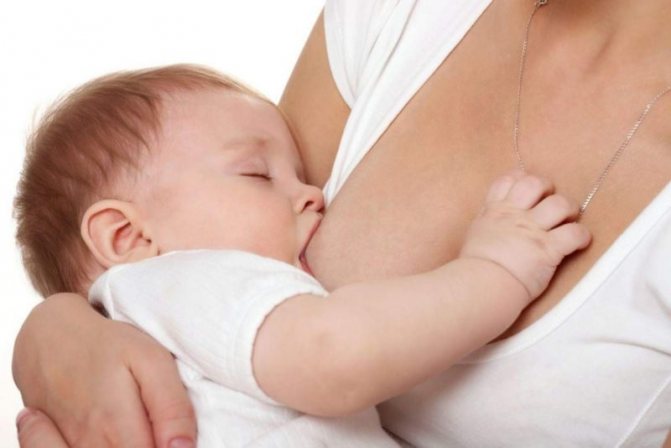
Pastila is a natural product made from fruit, sugar or honey. Sometimes milk and berry syrup are added to the treat. The safest sweet is marshmallows made from apple puree.
The healthy treat includes B vitamins, ascorbic and nicotinic acids, as well as phosphorus, calcium, iron, magnesium. When consumed in moderation, marshmallows while breastfeeding:
- has a beneficial effect on the epidermis;
- increases immunity;
- stimulates brain activity;
- increases performance;
- increases visual acuity;
- prevents the development of anemia in mother and child;
- normalizes the functioning of the digestive system.
When using marshmallows during lactation, you should listen to the advice of breastfeeding specialists. They make the following recommendations:
- a natural product can be introduced into the menu of a nursing mother in the 2-3rd month of the baby’s life;
- first eat a small portion (preferably in the morning) and monitor the newborn’s reaction;
- if the baby’s well-being worsens (colic, gas), or signs of allergies appear, stop using marshmallows, delaying its inclusion in the diet for 1-2 months;
- if the baby’s behavior has not changed, continue to feast on the product, following the measure: 100 g of marshmallows up to twice a week;
- give preference to white/cream-colored marshmallows with a minimum amount of ingredients without harmful additives;
- eat marshmallows as a dessert when you are full, washed down with plain water or unsweetened tea.
Initially, the technology for preparing marshmallows was simple and included two components - sugar and fruit puree. Modern manufacturers, to improve the taste and shelf life of the product, add chemicals that are harmful to breast milk. Therefore, when buying marshmallows, first of all, study its components, pay attention to the storage conditions and shelf life, and the integrity of the packaging.
What are the dangers of breastfeeding for a baby?
Natural marmalade (preferably homemade) is absolutely safe. It can be made from any products:
- goat milk;
- berry and fruit drinks;
- dried fruit compotes;
- juices and purees.
But the purchased one should be chosen carefully, because it may contain chemicals that cause not only allergic reactions, but also food poisoning of the body as a whole.
Therefore, you do not need to pay attention to brightly colored marmalade (the percentage of natural ingredients present is extremely low), and you should also not buy marmalade that is too sprinkled with sugar (extra kilocalories are of no use during the period of getting into prenatal shape).
Useful properties of marmalade

Marmalade is also allowed during lactation - a natural dietary product prepared on the basis of vegetable gelling ingredients, fruit juice, molasses syrup with the addition of natural dyes.
Marmalade contains useful elements that support the functioning of all organs and systems: sodium, magnesium, potassium, calcium, phosphorus, iron.
Marmalade is allowed during breastfeeding due to the content of pectin (gelling agent), which has a beneficial effect on the digestive system. It’s not for nothing that he is called the body’s orderly. It is possible to replace pectin with other natural substances - gelatin or agar-agar, which have gelling properties that benefit the female body.
Pectin-based marmalade helps cope with many pathologies:
- reduces the level of bad cholesterol in the blood;
- restores the metabolism of carbohydrates and lipids;
- removes harmful bacteria, normalizing the functioning of the gastrointestinal tract;
- promotes rapid wound healing;
- restores damaged skin;
- displaces heavy metals and radioactive nuclides from the body.
A marmalade treat made with the addition of agar-agar has the following beneficial properties:
- restores the functions of the liver and pancreas;
- promotes the functioning of the thyroid gland due to its iodine content;
- improves intestinal motility.
The natural product has a beneficial effect on brain function and restores strength after heavy exercise. The fair sex is attracted to the low calorie content of marmalade.
A nursing mother should give preference to a fruit and berry marmalade dessert made from fruit puree. Try to choose a product based on natural dyes, so when purchasing, check the composition, expiration date, and the tightness of the packaging.
Remember that everything is good if consumed in moderation. Unlimited consumption of marmalade will lead to diabetes, allergies, and caries.
Marmalade should be introduced into the mother’s diet when the newborn reaches 3 months of age and the baby’s condition should be monitored. The daily amount of marmalade for a nursing mother is 50 g. It is recommended to eat 1-2 marmalades before lunch.
Why can't you have sweets while breastfeeding?
It's all about the peculiarities of the digestive system of a newborn baby, which is not at all perfect:
- the stomach is located horizontally, and not vertically, like in an adult, with insufficient formation of the entrance sphincter, which provokes active regurgitation;
- the digestive glands secrete a small amount of secretion, which is necessary for digesting food;
- the intestines are sterile - they need beneficial microflora, which enters the baby’s body along with mother’s milk;
- intestinal motor activity is greatly reduced, as a result of which ailments often appear;
- the digestive system is not designed to digest such an amount of fast carbohydrates if the mother begins to eat a lot of sweet foods;
- increased permeability of the intestinal walls - this leads to lightning-fast absorption of harmful substances into the baby’s body, immediately provoking acute poisoning;
- The muscles of the stomach and intestines are underdeveloped, which leads to the accumulation of gas, bloating and pain, which can be further provoked by unhealthy and heavy foods.
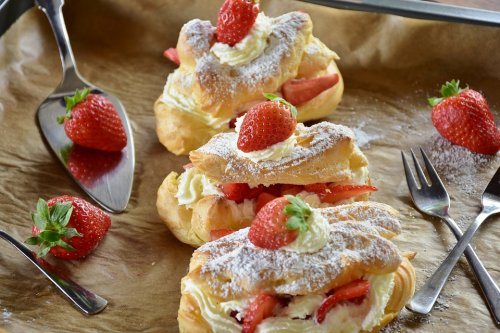
What are the dangers of breaking a young mother’s diet?
All of the above is a good reason for the mother of a baby to strictly monitor the correctness of her diet, since failure to follow simple diet rules can lead to various kinds of troubles:
- the appearance of allergies in the baby;
- the appearance of colic, bloating and gas formation;
- poisoning of the baby;
- the appearance of various digestive problems in the child in the future;
- capriciousness and irritability in the baby;
- insomnia in mother and baby due to a sore tummy.
Troubles arise not only for the baby, but also for his mother:
- risk of developing obesity;
- risk of caries;
- risk of developing diabetes;
- rapid weight gain - due to a sharp jump in sugar entering the blood after pregnancy, childbirth and abstinence in the first months of the baby’s life;
As you can see, not a single piece of candy is worth the consequences that may arise from a young mother’s intemperance in eating. So, let's return to the question of whether it is possible to eat sweets while breastfeeding and, if so, what sweets can a nursing mother eat?
We offer you delicious marshmallow recipes
Recipe No. 1: plum marshmallow
Plum marshmallow is prepared from 1 kg. plums and 250 g of sugar. Wash the fruits, peel and remove seeds, then steam over low heat for an hour (do not add water). Puree the boiled plum in a blender until pureed, put it back on the fire for 2 hours, remembering to stir regularly. After 1.5 hours, add granulated sugar, continuing to cook. Spread the cooled mass on a baking sheet covered with parchment in a thin layer and dry for 15 hours with an open oven heated to 80 degrees.
Recipe No. 2: apple marshmallow
Apple/pear pastille takes a long time to prepare. Pass the peeled fruits through a blender. Add sugar, honey, and cinnamon to the puree to taste. Pour the mixture into a thin layer on a baking sheet lined with baking paper and dry in the oven for several days. Apples and pears can be mixed or used separately, depending on your taste preferences.
Recipe No. 3
Another possible way to prepare apple marshmallow is a dessert that can be eaten by the mother already in the first month of the child’s life.
To prepare it you will need: 2 kg of green apples, 2 chicken whites, a glass of sugar.
- Cut the peeled apples into 8 parts, place in the oven (180 degrees) for 15 minutes;
- Rub the fruit through a sieve/blender, add half the amount of granulated sugar, beat until a white homogeneous mass is formed;
- Separately, beat the whites with the remaining sugar (add gradually);
- Combine the protein mass with applesauce, first setting aside 4 tablespoons of whipped egg whites (useful later), mix thoroughly;
- Dry for 7 hours in a slightly open oven (100 degrees);
- Divide the finished layer into 4 parts, grease each with the previously reserved egg white, stack on top of each other;
- Place in the oven and bake for another 2 hours under the same conditions;
- Sprinkle the finished product with powdered sugar.
Making marmalade at home
Marmalade is prepared as follows:
- dissolve 50 g of gelatin in warm water, leave to swell;
- at this time, prepare 300 ml of juice from the fruit (at home it is better to use apples);
- bring the juice to a boil, add 400 g of granulated sugar;
- simmer the mixture over low heat for 10 minutes;
- cool slightly;
- pour into molds;
- Decorate the finished dessert with powdered sugar.
The above recipes for marmalade and marshmallows are easy to prepare and are most useful for mom.
Conclusion
To sum up the question of whether a nursing mother can have marmalade, marshmallows and marshmallows (it differs little from marshmallows), we would like to once again draw the attention of young mothers to the following points:
- firstly, you should not eat sweets every day, as they contain quite a large amount of sugar;
- secondly, remember a sense of proportion - do not allow yourself more than 100 g of goodies.
Treat yourself to healthy sweets 1-2 times a week, then you and your baby will be healthy and full of strength.
What kind of marmalade can you eat on breastfeeding?
It is especially important for a nursing mother to eat the right and safe foods. When choosing marmalade, you must first look at its naturalness. In addition, it is important what puree it is made from. Treats made from hypoallergenic components can be introduced into the diet earlier than those that can trigger allergies. It is best to make marmalade yourself. This way you will be confident in the quality of the product, but if you don’t have the time or opportunity to do this, you can eat store-bought.
How to choose a natural product in a store?
It is difficult to find real marmalade on store shelves. Most often it is a mixture of gelatin, sugar and various chemical additives, which has nothing to do with natural fruits. Therefore, when choosing marmalade, first of all look at the composition. The shorter the list of ingredients, the healthier the product. It must contain fruit or puree, otherwise it is not marmalade.
Look at the expiration date. The shorter it is, the more natural the delicacy. Examine the marmalade itself. It should not stick to the packaging. When you press on the product, it should quickly regain its shape. If the marmalade crunches or crumbles, it is either incorrectly made or expired. The taste of real marmalade should not be cloying; it always contains a slight sourness.
Chewing
Children especially love chewing marmalade, which is why it is most often produced in small, brightly colored packages. These are spring translucent small candies. They are slightly sour and do not stick to your hands. Unfortunately, such delicacies most often contain dyes, flavors and thickeners that are undesirable for nursing mothers. But if you see E-shki in the composition, figure out what they mean. Manufacturers often add natural extracts and describe them this way.

